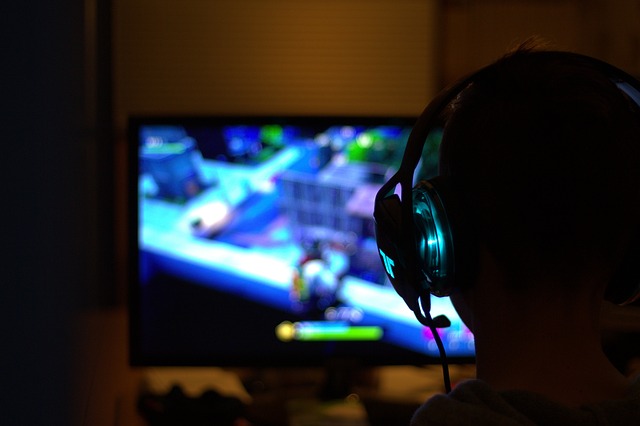Early Development and Modding Scene
“Counter-Strike” began as a modification (mod) for the popular first-person shooter (FPS) game “Half-Life,” developed by Valve Corporation. The mod was created by two enthusiasts, Minh Le (known as Gooseman) and Jess Cliffe, who were passionate about creating a realistic and team-based tactical shooter.
Minh Le, a Canadian computer science student, had been involved in the modding community for some time. He had previously worked on mods for games like “Quake” and “Quake II.” Jess Cliffe, a web designer and gaming enthusiast, partnered with Le to work on the new project. Their shared vision was to create a game that focused on realistic combat scenarios and team-based gameplay.
Release and Evolution
The first beta version of “Counter-Strike” was released in June 1999. It quickly gained popularity within the gaming community, thanks to its innovative gameplay mechanics and realistic approach. Players could choose to join either the terrorist or counter-terrorist team, each with specific objectives such as planting or defusing bombs, rescuing hostages, or eliminating the enemy team.
Over the next year, multiple beta versions were released, each adding new features, maps, and gameplay improvements. The feedback from the community played a crucial role in shaping the game. In November 2000, Valve Corporation acquired the rights to “Counter-Strike” and hired Minh Le and Jess Cliffe to continue developing the game.
In 2000, the first retail version of “Counter-Strike” was released, and it quickly became one of the most popular online multiplayer games. Its success was fueled by its competitive gameplay, realistic mechanics, and strong community support.
Key Features of Counter-Strike
Team-Based Gameplay: Players are divided into two teams, terrorists and counter-terrorists, with distinct objectives.
Realistic Weapons and Mechanics: The game features a wide range of real-world weapons, each with unique characteristics and handling.
Objective-Based Missions: Game modes include bomb defusal, hostage rescue, and assassination, adding strategic depth.
Community-Driven Content: The modding community contributed to the game’s development with custom maps and mods.
Competitive Play: “Counter-Strike” laid the foundation for competitive esports, with tournaments and professional leagues emerging.
How to Make a Game Similar to Counter-Strike
Creating a game similar to “Counter-Strike” involves a combination of design, programming, art, and sound. Here’s a step-by-step guide to help you get started:
1. Concept and Design
Game Concept:
Define the core gameplay mechanics: team-based, tactical shooting with realistic weapons and objectives.
Decide on game modes (e.g., bomb defusal, hostage rescue, team deathmatch).
Game Design Document:
Create a detailed design document outlining the game’s features, mechanics, and goals.
Include descriptions of weapons, maps, character roles, and game rules.
Prototyping:
Develop a basic prototype to test core mechanics and gameplay.
Use simple assets and focus on functionality.
2. Development Tools and Technologies
Game Engine:
Choose a game engine suitable for FPS development. Popular choices include Unity and Unreal Engine.
Unity is known for its ease of use and flexibility, while Unreal Engine offers powerful tools and high-quality graphics.
Programming Languages:
Unity uses C# for scripting.
Unreal Engine uses C++ and its visual scripting system, Blueprints.
Version Control:
Use a version control system like Git to manage your project files and collaborate with team members.
3. Core Mechanics and Features
Player Movement and Controls:
Implement smooth and responsive player controls for movement, aiming, and shooting.
Include features like crouching, jumping, and sprinting.
Weapon System:
Create a weapon system with various firearms, each with unique properties (damage, recoil, accuracy, rate of fire).
Implement features like reloading, switching weapons, and aiming down sights.
Combat Mechanics:
Develop hit detection and damage calculation systems.
Implement health and armor systems for players.
Team and Objective System:
Set up team-based gameplay with clear objectives for each game mode.
Include a round-based system with win/loss conditions.
Artificial Intelligence (AI):
Develop AI for bots to simulate players if needed.
Implement AI behaviors for different roles (e.g., patrolling, attacking, defending).
4. Maps and Level Design
Map Creation:
Design and create maps with strategic elements, such as chokepoints, cover, and sightlines.
Use a level editor or 3D modeling software to build the maps.
Balancing:
Test and iterate on maps to ensure balanced gameplay for both teams.
Consider the placement of objectives, spawn points, and weapon pickups.
5. Art and Sound
Graphics and Assets:
Create or acquire 3D models for characters, weapons, and environments.
Develop textures, animations, and visual effects to enhance the game’s realism.
Sound Design:
Record or source sound effects for weapons, footsteps, and ambient noises.
Include voice lines for character interactions and mission updates.
User Interface (UI):
Design a clean and intuitive UI for menus, HUD, and in-game information.
Include elements like health bars, ammo count, and objective indicators.
6. Testing and Iteration
Playtesting:
Conduct regular playtesting sessions to gather feedback and identify issues.
Focus on gameplay balance, bugs, and overall player experience.
Iteration:
Continuously refine and improve the game based on feedback.
Adjust mechanics, maps, and features to ensure a polished final product.
7. Deployment and Community Engagement
Publishing:
Choose a distribution platform (e.g., Steam, Epic Games Store) to release your game.
Prepare marketing materials, such as trailers and screenshots, to promote the game.
Community Engagement:
Build and maintain a community around your game through social media, forums, and updates.
Encourage player feedback and support modding to extend the game’s lifespan.
Conclusion
Creating a game similar to “Counter-Strike” is a complex and challenging task, but with careful planning, dedication, and a clear vision, it is achievable. By understanding the core mechanics and features that made “Counter-Strike” successful, you can develop a tactical shooter that captures the essence of what makes these games compelling. Remember to focus on gameplay balance, community engagement, and continuous improvement to create a game that resonates with players.








